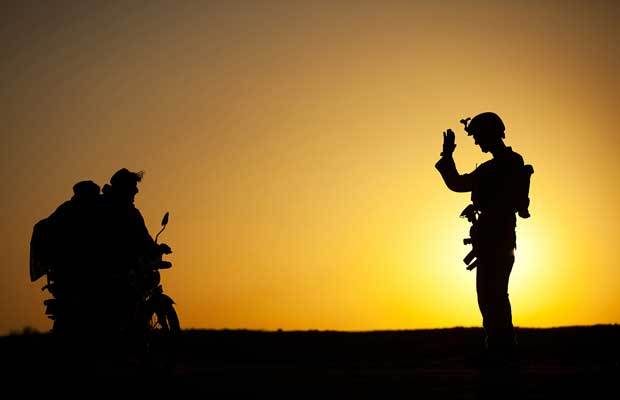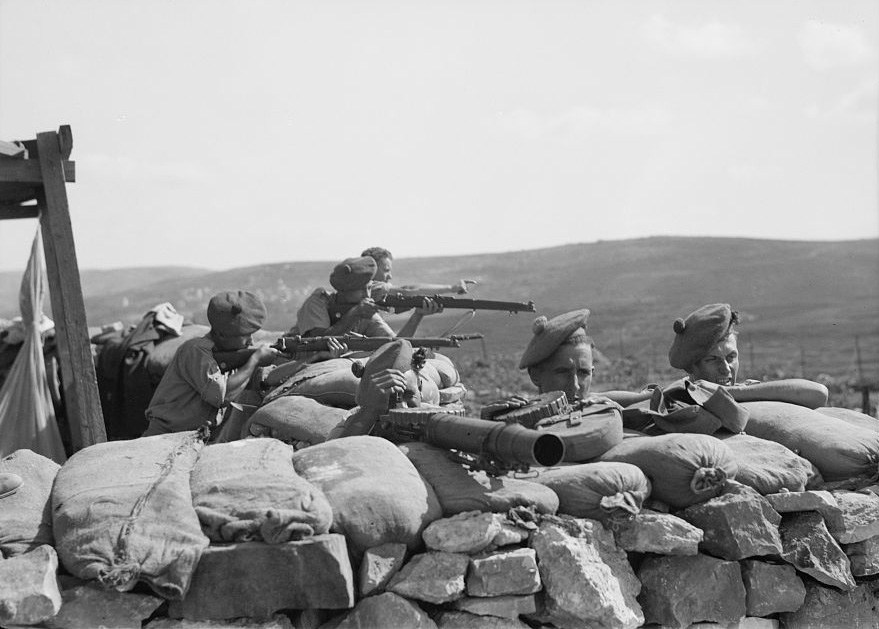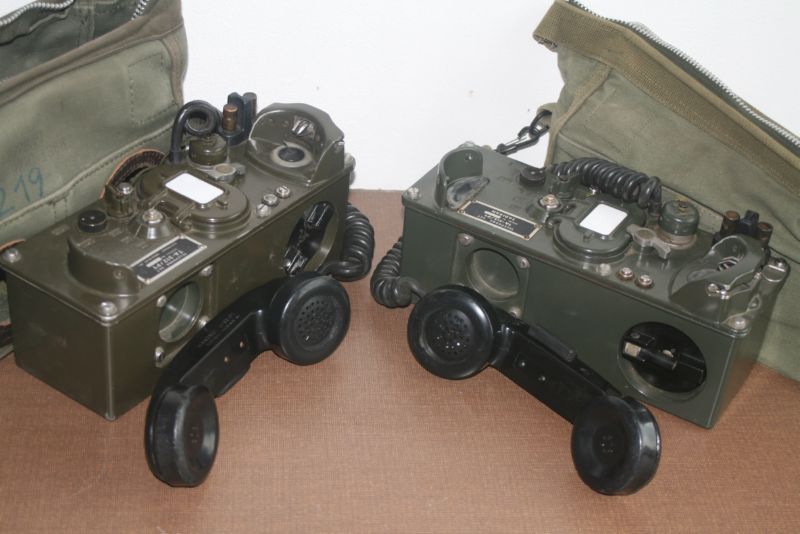
Introduction
If you happen to have worked on a military base in the past, I’m sure you’ve encountered guards standing at the guardhouse routinely waving traffic through the gate – maybe stopping the occasional vehicle to ask a question or two before waving them through. Such a relaxed approach may be adequate during peacetime, however post-disaster these procedures will be wholly inadequate. This article will describe how small communities can establish and manage effective post-disaster roadblocks.
With the recent unrest in Ferguson, MO we’ve actually had a rather ugly preview of coming attractions regarding the need to control and monitor the movement of people. The image of a large gang of criminals, intent on looting, migrating to a neighboring community and shooting their way into a locked store, is an image that should be forever branded into the consciousness of every prepper. This is precisely the reason that the movement of people will need to be controlled, and it’s going to require more than a smiling face and a wave of the hand.
In the wake of a major disaster, those living in small to mid-sized communities will be faced with the challenge of quickly reorganizing to cope with new and immediate concerns. One critical need will be to “control the perimeter”, which will involve establishing security checkpoints to control and monitor comings and goings. Without such controls the risk of disease and lawlessness could threaten the community’s very existence.
While, at first blush, it may seem trivial to set up a roadblock (“Hey, you two guys go down the road and check anybody passing through town!”), during times of disaster an effective roadblock requires more serious consideration.
Selecting Locations for Roadblocks
As with many aspects of life, when establishing a roadblock “location is everything”, and factors that should help to identify the best location for a roadblock include distance from population centers, availability of sufficient space to meet the roadblock’s missions, ability to be defended and potential for line-of-sight communications.
Ideally a roadblock should be a minimum of 0.75 miles (1.2 kilometers) from any dense population centers. This distance corresponds roughly to the range of a high-powered rifle. In other words, a defensive perimeter is much less useful to a community if an adversary can effectively shoot at members of the community from outside the defended perimeter (a roadblock should, if possible, be that distance from any location where a member of the community lives or works).
Military snipers have been known to, on rare occasions, hit targets at distances approaching 1.5 miles. Obviously a bit larger safe zone should be considered if one anticipates adversaries having military sniper training.
Roadblocks are staffed by people, and in the long term people require supporting infrastructure. Such infrastructure potentially includes provisions for the sanitary elimination of human waste, protection from the weather, storage of supplies and space to be used to detain travelers without blocking traffic. Any location considered for a permanent or long-term roadblock should address these real-world needs.
The security of those staffing a roadblock should be a primary concern when selecting its location. It is inevitable that there will eventually be security incidents at any roadblock, and the personnel there should be able to ward off any anticipated attack until reinforcements can arrive. The availability of hard and soft cover should be considered, as well as local geography (with regard to both offense and defense). In some situations it may be important to have a concealed shooting position located nearby to provide supporting fire in the event of the most serious situations.
Yet another important factor to consider when selecting the location of a roadblock is the availability of line-of-sight communication to the community. This can be important in case other more conventional means of communication become unavailable. For example, flags might be flown to request reinforcements or to visually indicate other abnormal situations. In some cases it may be necessary for a central headquarters within the community to have a line-of-sight to the roadblock, while in other cases it may be sufficient for the roadblock to be within sight of any population center (from which communication might be relayed to the central headquarters).
In addition to the factors already mentioned, a roadblock should be established at a location that is a natural traffic bottleneck. Otherwise it is possible that intruders could simply bypass the roadblock.

Sandbags are an often over-looked prepper supply that can make very effective cover for fighting positions. Just add hard work.
Facility and Equipment
Without certain basic features necessary to meet the needs of those who will be staffing it, the ability of a permanent or long-term roadblock to accomplish its mission will be significantly degraded. The roadblock station should feature:
- A latrine or other means of eliminating human waste in a sanitary fashion
- A source of clean water
- A structure that provides protection from the weather
- A flagpole (and various colored flags) for backup visual communication
- A siren or other device for producing a loud and distinctive audible alert
- A lockable storage bin that is protected from the weather
- Sandbags or some other form of hard cover
- Nearby access to places of concealment
- A movable barrier to control the flow of traffic
- A radio or other device for security-related communications
- Chairs
- A temporary parking area where one or more vehicles may be detained without blocking other traffic
- Signs posted at appropriate locations to provide instructions and cautions to approaching travelers
Flags of various colors should be available to, at a minimum, signify abnormal security conditions (perhaps yellow and red), requests for unscheduled personnel rotation and requests for medical assistance.
In addition to the equipment listed above, those who staff the roadblock (and anyone providing them covering fire) should carry weapons that are appropriate to their role. Holstered handguns, along with spare magazines and a good supply of ammunition, are probably a best fit for those staffing the roadblock; with a rifle close at hand in the guard shack. The advantage of holstered handguns is that they leave hands free for signaling and conducting searches.
Communications
Good communications, both among the personnel staffing a roadblock and between the roadblock and other security personnel within the community, is vitally important. Efficient non-verbal communications between the personnel staffing the roadblock can be quite useful. For example, hand signals might be used to guide traffic or to quickly and silently communicate ‘caution’ or ‘danger’ to other personnel staffing the roadblock. They might also be useful in communicating with any concealed locations that are tasked with providing covering fire during times of heightened security.
Radio or other forms of electronic communication between the roadblock, a central headquarters and/or other roadblocks or other security personnel can obviously also fill a vital role. If non-secure radio communications are utilized then standard code words (similar to the ’10 codes’ used today by law enforcement personnel) should be employed to augment communications security (‘COMSEC’).

TA-312 field phones can still be purchased in surplus stores.
An alternative to radio communications is the use of military grade ‘field telephones’. Such phones provide the advantage of increased COMSEC. Military-model phones worth consideration are the TA-1, the EE-8 and the TA-312 field telephones, which have been used by the US military throughout the twentieth century. The TA-1 offers a range of up to four miles and requires no power source (it is voice-powered). The EE-8 offers a range of up to 17 miles, but requires batteries. The TA-312 has a range of up to twenty-two miles under dry conditions, and features a built-in hand generator so that batteries are not necessary for operation.
Small military switchboard devices can be installed at the central headquarters to enable point-to-point telephone communications between multiple locations. There would also be a need to obtain sufficient lengths of telephone wire to interconnect the desired stations.
As has already been mentioned, flags and sirens can fill an important role by providing a means of communicating certainly critical conditions to the entire community.
Staffing
It is typical to have a roadblock staffed by a minimum of three individuals; two members of the team typically process foot traffic and vehicles through the roadblock in accordance with standing orders, while the third oversees the operation from the guard shack and is ready to react appropriately if an incident develops. Occasionally the duties associated with manning the roadblock can be physically demanding (for example, if the station comes under attack), so it is important that all team members be physically fit.
Under normal circumstances teams should work in shifts and rotate on and off the roadblock in accordance with a pre-established schedule. As already suggested, in times of heightened alert it may also be prudent to employ a concealed sniper to provide support on an as-needed basis.
Using Roadblocks to Gather Intelligence
Roadblocks can be excellent (and cost-effective) sources of critical intelligence information about potential future security threats to the community. Question and answer sessions conducted with passers-by can provide a wealth of information which can often be corroborated by multiple independent observers. When collecting information from travelers about potential adversaries they may have observed, the following ‘SALUTE’ questions should be remembered:
- S)ize of potential adversaries
- A)ctivity a potential adversary was observed being engaged in
- L)ocation of potantial adversaries
- U)nit Types Capabilities of potential adversaries
- T)ime the potential adversary was observed
- E)quipment possessed by a potential adversary
Policies and Procedures Governing Roadblocks
The individuals manning a community roadblock should be governed by policies and procedures in addition to and standing orders. Policies governing a roadblock should include:
- If possible the personnel staffing the roadblock should wear common uniforms or otherwise present themselves to travelers as members of a disciplined and professional unit.
- To the greatest extent possible, roadblock personnel should maintain detailed notes of all incoming and outgoing traffic, including answers to the ‘SALUTE’ questions described above as appropriate.
- The maximum number of consecutive hours that individuals should attend a roadblock without being relieved.
- Identification of different classes of travelers (e.g. community members, vs. known locals vs. unknown personnel)
- Standard operating procedures for handling each class of traveler.
- Policies regarding personnel taking necessary breaks during their work shift.
- Regularly-scheduled check-ins with the central headquarters.
- The use of special signs or signals for identification purposes.
- The procedure for evacuating the roadblock in the event that it is overrun (including the destruction of sensitive materials and equipment)
- Criteria for pursuing vehicles that attempt to flee the roadblock
Conclusion
The use of roadblocks to control and monitor the flow of inbound and outbound traffic (foot traffic and otherwise) is important to the community from many perspectives. In addition to strengthening the defense of the community, it can be a valuable source of strategic intelligence. The presence of roadblocks also increases the community’s sense of security and well-being, which can itself translate into increased productivity and economic activity.
To paraphrase the great poet Robert Frost who once proclaimed that “Good Fences Make Good Neighbors” it can be said that “Good Roadblocks Make For Secure Survival Communities”.
Somehow my version just doesn’t seem as poetic!




















